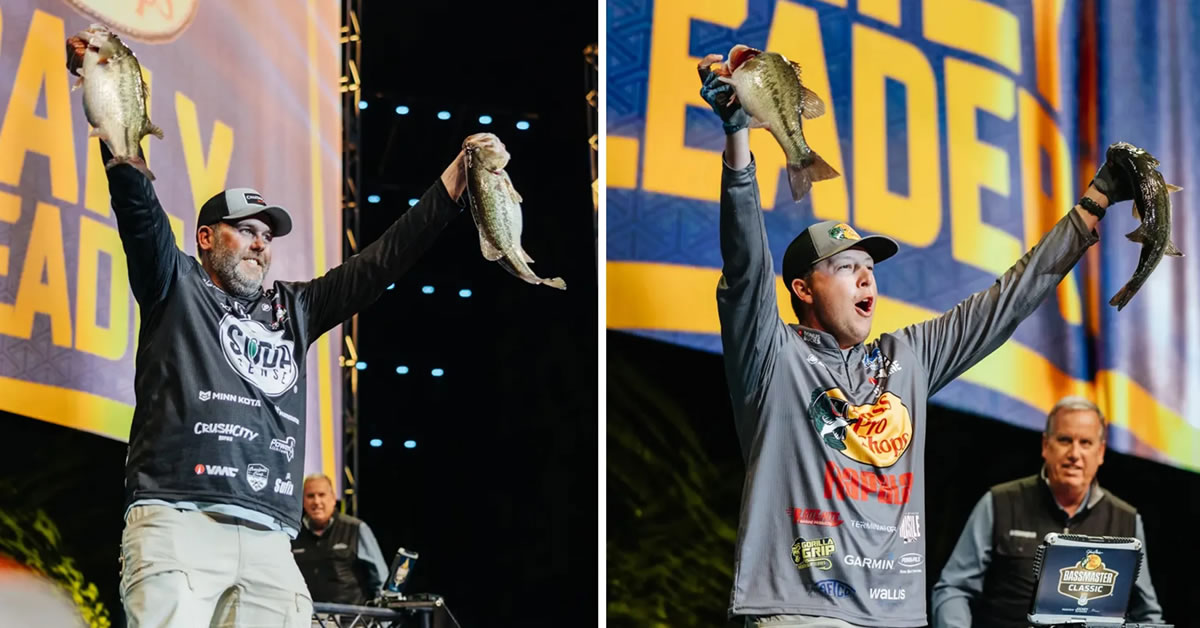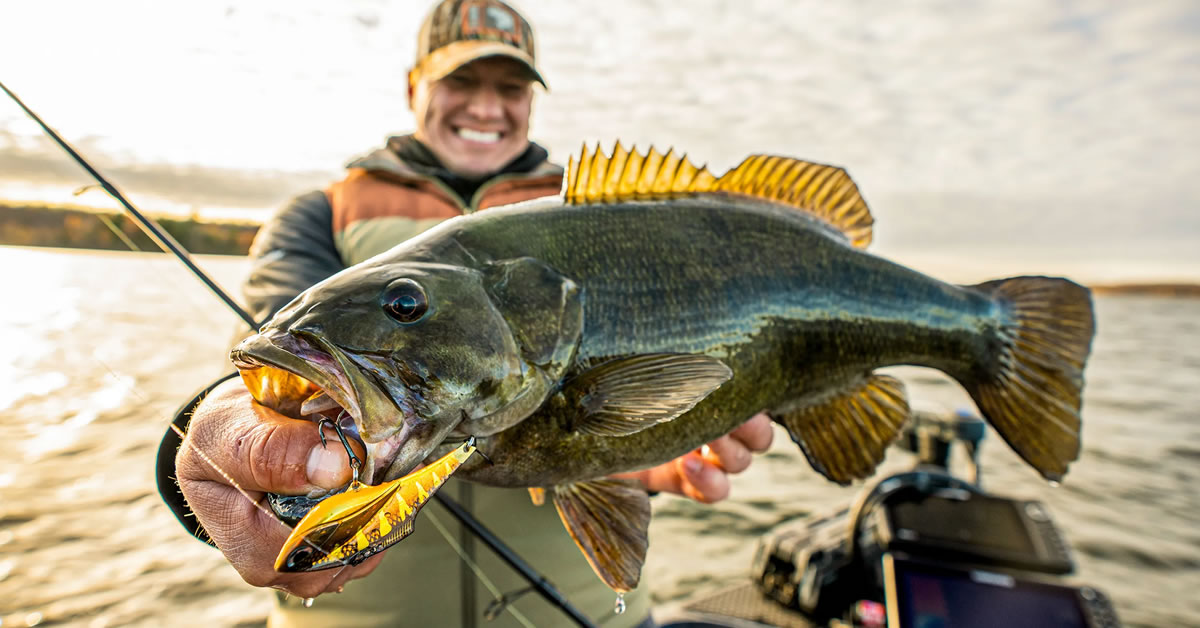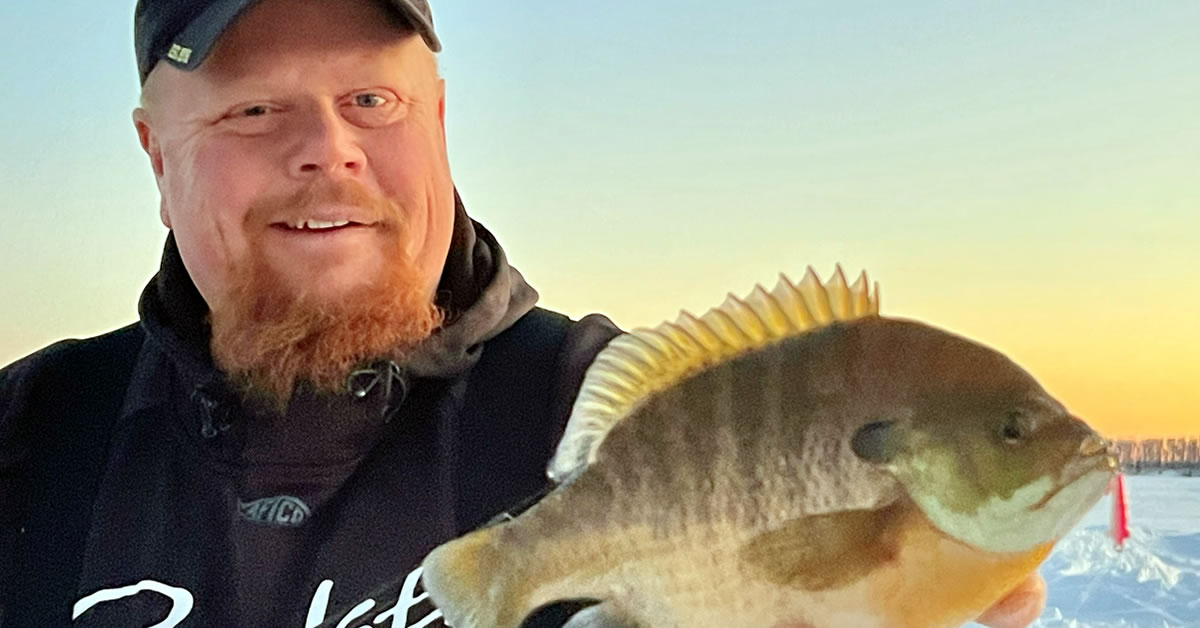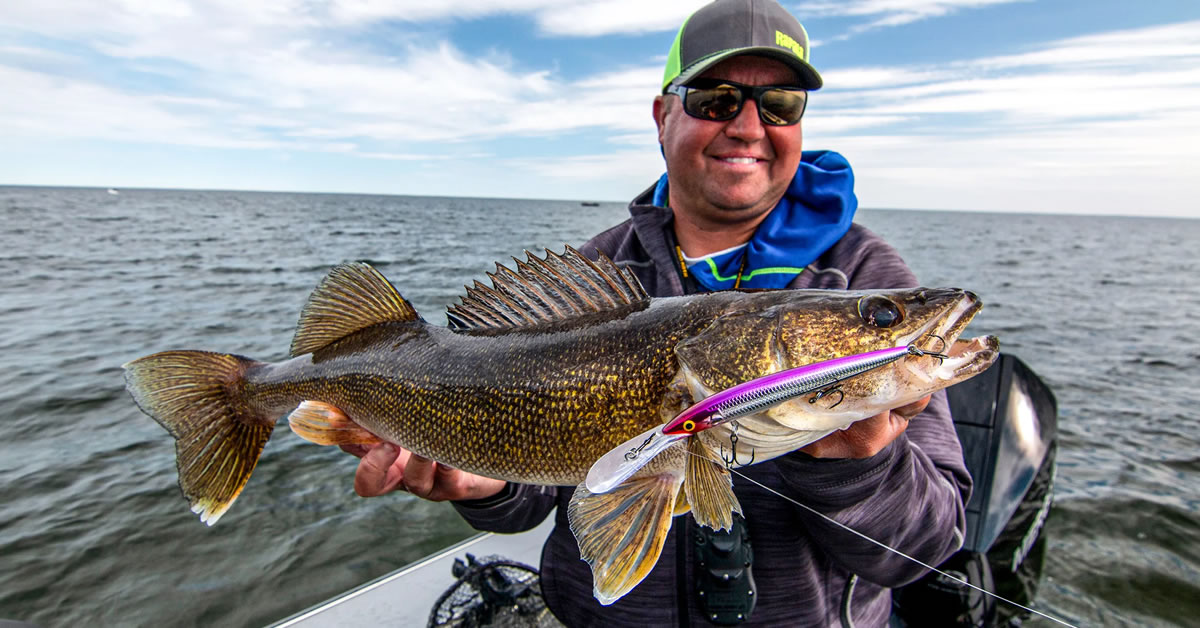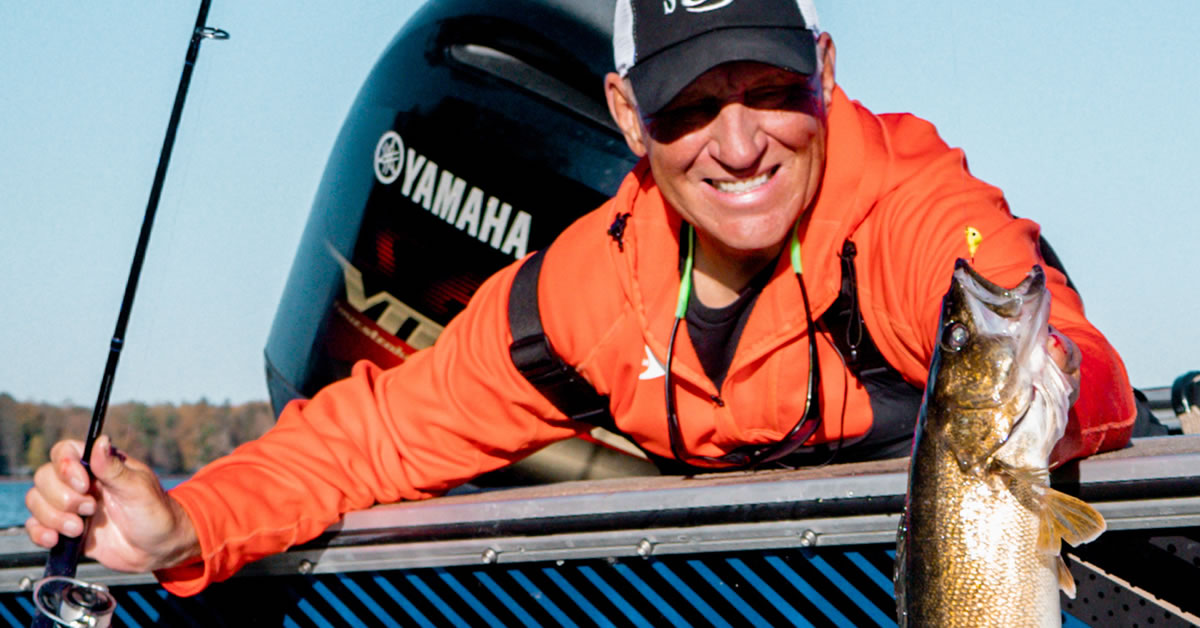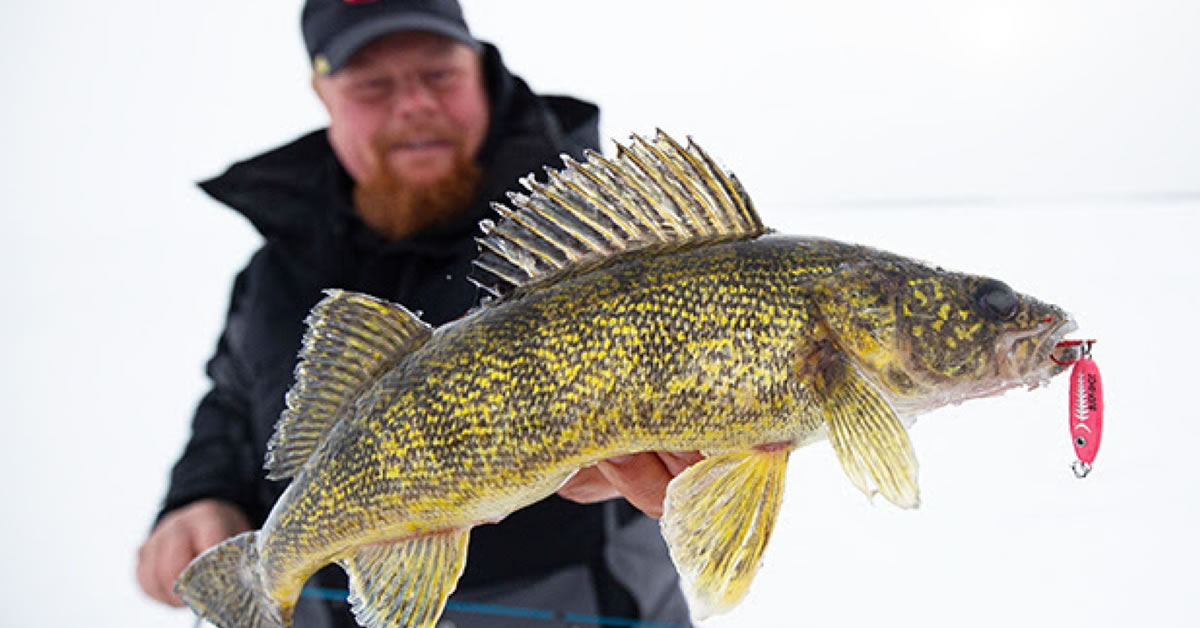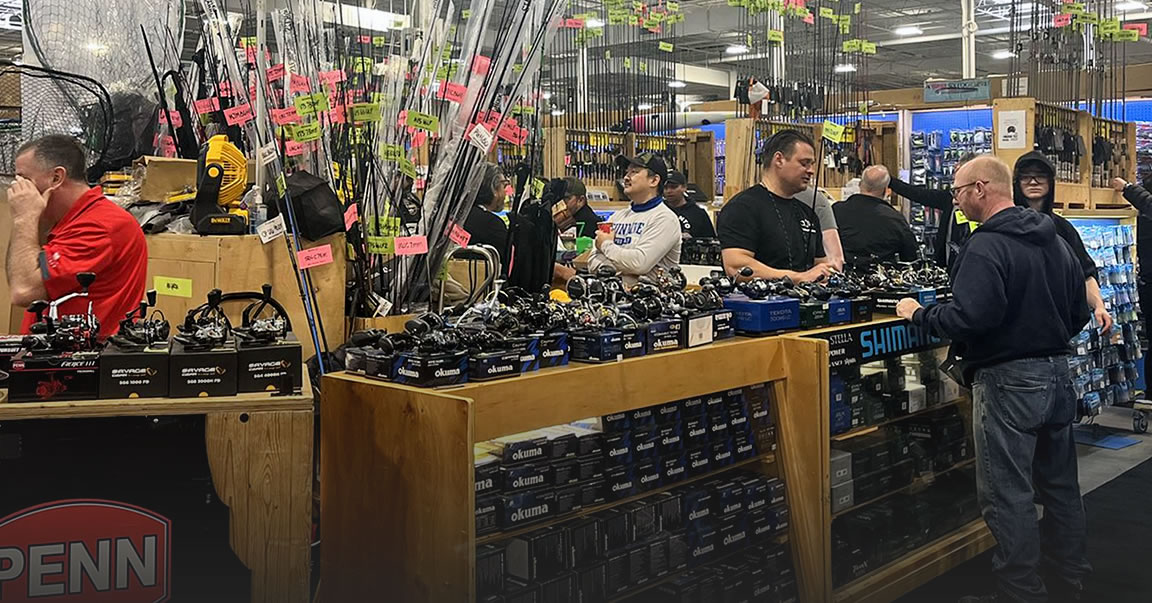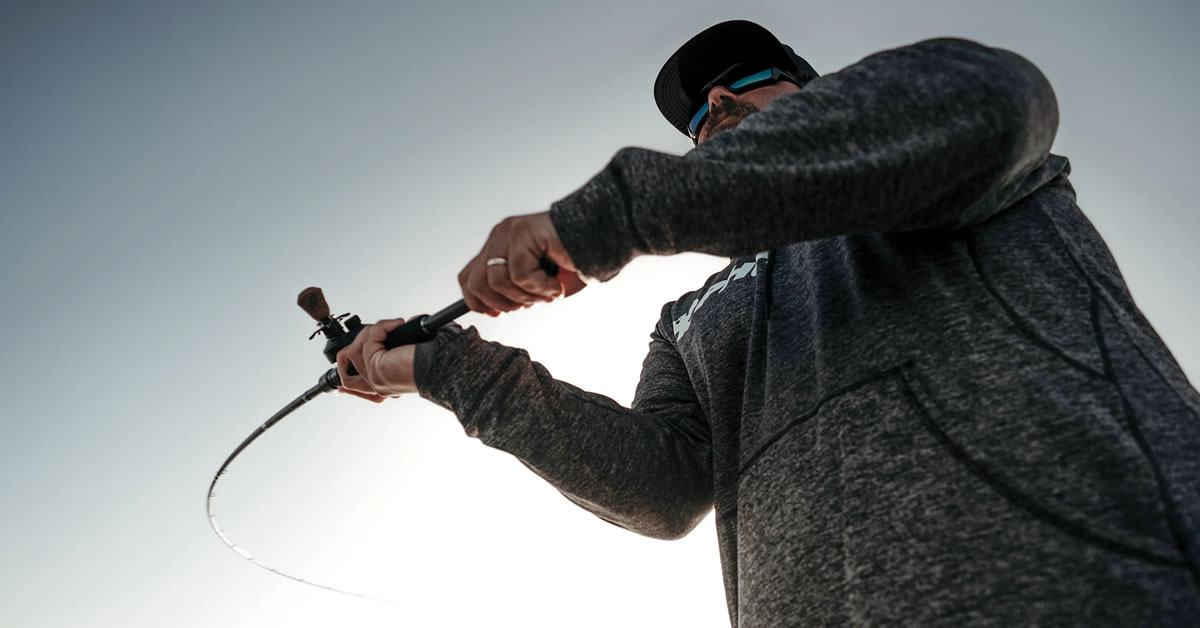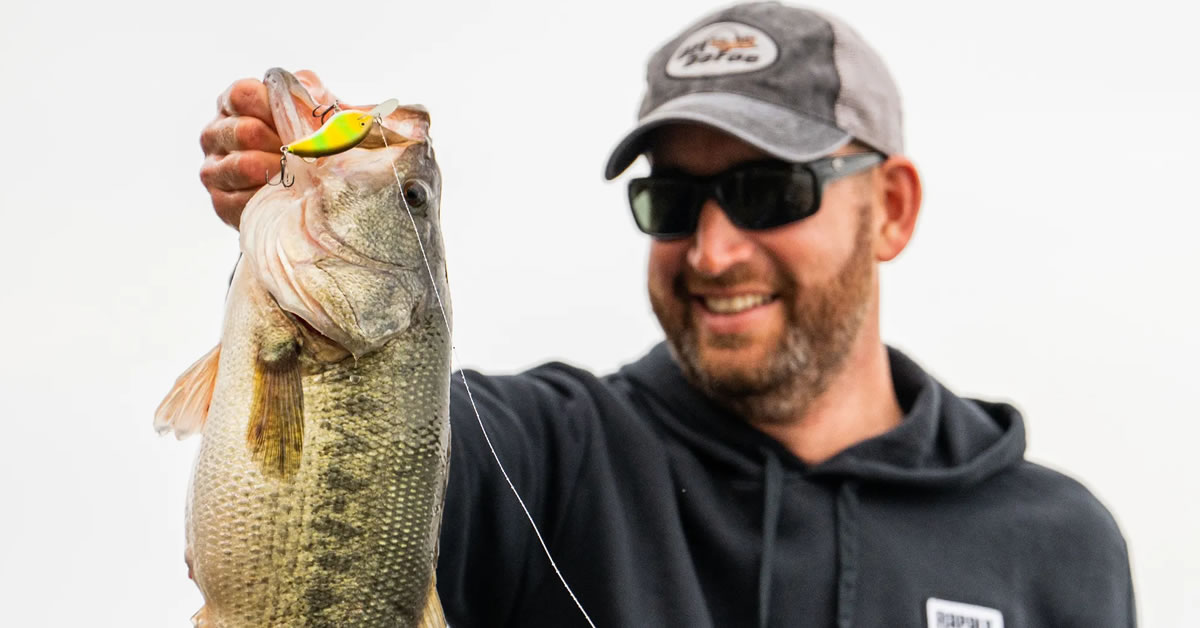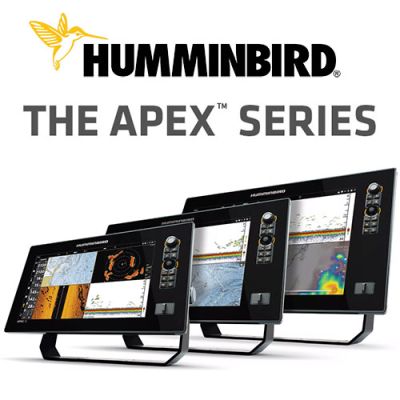Porkfest For Late Summer And Fall Walleyes
by Adam WaltonHard & Soft Fishing, makers of Uncle Josh Pork Baits, have hit a homerun! Their Pork Crawlers have been doing damage on hungry walleyes since they first hit the market. These versatile baits can be fished many ways, but during the late summer months, it's hard to overlook their ability to catch fish when incorporated with spinner harnesses. Before discussing how to rig harnesses, let's briefly discuss walleye feeding behavior and common locations fish relate to during the hot dog days that lay ahead.
.jpg) As the summer continues, increasingly warm water causes fish to have an increased metabolism. This is great for anglers, since fish stay more active and feed more often. Although fish activity is sped up, walleye still feed in cycles and determining if they're in an aggressive, neutral, or negative feeding mood is important. Factors such as speed presentation of your bait, location of fish on your sonar, and fish striking behavior will help figure this out. If aggressive, many fish are likely to chase faster moving baits. If in a neutral or negative feeding mood, fish tend to prefer slower presentations and often strike out of instinct. Also, in deeper water, fish found suspended on the sonar are most likely aggressively feeding, whereas fish marked hugging the bottom are apt to be in a negative feeding mood. In shallow water there is no way to differentiate suspenders from bottom huggers, therefore aggressive and non feeding fish hold together. When looking at strike behavior, aggressive fish often strike hard and inhale baits, where less aggressive fish strike very light and may only have a single hook barely in their mouth.
As the summer continues, increasingly warm water causes fish to have an increased metabolism. This is great for anglers, since fish stay more active and feed more often. Although fish activity is sped up, walleye still feed in cycles and determining if they're in an aggressive, neutral, or negative feeding mood is important. Factors such as speed presentation of your bait, location of fish on your sonar, and fish striking behavior will help figure this out. If aggressive, many fish are likely to chase faster moving baits. If in a neutral or negative feeding mood, fish tend to prefer slower presentations and often strike out of instinct. Also, in deeper water, fish found suspended on the sonar are most likely aggressively feeding, whereas fish marked hugging the bottom are apt to be in a negative feeding mood. In shallow water there is no way to differentiate suspenders from bottom huggers, therefore aggressive and non feeding fish hold together. When looking at strike behavior, aggressive fish often strike hard and inhale baits, where less aggressive fish strike very light and may only have a single hook barely in their mouth.
Depending on various factors, such as food source location, weather conditions, and water temperature, determining location of walleyes during the late summer season can be fairly simple. Just like other times of the year, fish will first relate to areas with food sources near-by. In shallow water, look for windswept reefs, weed beds, or a simple rock hump surrounded by a field of mud. These areas commonly hold bait fish and other food sources walleye prefer. In deeper water, simply look for schools of bait fish and feeding walleyes will typically be close by. Weather factors will affect fish location as well. Wind and cloud cover help fish hold in shallow water for longer periods of time and allow deeper water fish to feed higher up in the water column. The decreased sunlight condition allows walleyes to feed on unsuspecting prey and is easier on their sensitive eyes. Strong winds will also push plankton and bait fish into leeward locations of a lake, bringing walleyes to these areas to feed. More relevant to late summer, water temperature in shallow lakes that can heat up greatly, causing fish to seek relief near cool springs or inlets that bring in cooler water. In deeper lakes, fish simply retreat from the shallows and into deep cool areas of comfort. Once you have located the walleyes, it's time to rig up the crawler harnesses and start pulling fish into the boat.
.jpg) To rig a harness with Uncle Josh's Pork Crawler, simply thread it onto the lead hook and then hook the tail through the trail hook/s, leaving a few inches hanging off. Ensure you leave a gap between the point of the hook and crawler. Leaving this gap will result in better hook ups. In shallow water, using bottom bouncing pencil weights or rock runner weights seem to work better than using snap weights. Unlike snap weights, pencil weights and rock runners will keep the harness rig near the bottom with precision. Snap weights on the other hand are not as easy to precisely control their running depth. With snap weights any small changes in speed and even making turns when trolling can cause harnesses to travel up and down 2 to 3 feet in the water column. This can be a problem if fishing shallow, leaving your harness dragging the bottom. Being close to the bottom is important in shallow water, but harnesses that are constantly dragged along the bottom tend to pick up debris and will not operate properly. After the harness is baited and rigged with the proper bottom bouncing weight, try trolling between 1.5 to 2.5 mph for aggressive fish. If fish are less aggressive, try slowing your speed to 0.5 to 1.0 mph. When fishing shallow, using planer boards allows you to move harnesses away from the boat and also allows for more lines to be trolled. Although not required, installing tattle flags to the planer boards when trolling harnesses will help show if smaller fish or weeds are hooked.
To rig a harness with Uncle Josh's Pork Crawler, simply thread it onto the lead hook and then hook the tail through the trail hook/s, leaving a few inches hanging off. Ensure you leave a gap between the point of the hook and crawler. Leaving this gap will result in better hook ups. In shallow water, using bottom bouncing pencil weights or rock runner weights seem to work better than using snap weights. Unlike snap weights, pencil weights and rock runners will keep the harness rig near the bottom with precision. Snap weights on the other hand are not as easy to precisely control their running depth. With snap weights any small changes in speed and even making turns when trolling can cause harnesses to travel up and down 2 to 3 feet in the water column. This can be a problem if fishing shallow, leaving your harness dragging the bottom. Being close to the bottom is important in shallow water, but harnesses that are constantly dragged along the bottom tend to pick up debris and will not operate properly. After the harness is baited and rigged with the proper bottom bouncing weight, try trolling between 1.5 to 2.5 mph for aggressive fish. If fish are less aggressive, try slowing your speed to 0.5 to 1.0 mph. When fishing shallow, using planer boards allows you to move harnesses away from the boat and also allows for more lines to be trolled. Although not required, installing tattle flags to the planer boards when trolling harnesses will help show if smaller fish or weeds are hooked.
When fishing deeper water, using electronics is a must to help locate walleyes. Many aggressive fish will likely be suspended and less aggressive fish will be towards the bottom. Since aggressive fish are obviously easier to catch, look for both large suspended fish and suspended bait fish that walleyes may be feeding on. Although large fish may not be marked on the sonar where bait fish are present, chances are they are close by. If schools of bait fish are located subsurface don't be afraid of running a few harness rigs just below the surface too. When they're aggressively feeding, it's not uncommon to have suspended walleyes come up to hit these presentations. When fishing suspended walleyes, using snap weights or in-line weights work best with crawler harnesses, since they can be set to run at various depths other than just along the bottom. Rig the harness with Pork Crawlers as discussed before and add the appropriate sized snap weight to present the harness near the suspended fish depth. Common snap weight sizes vary from 0.5 oz to 3.0 oz, so finding the proper one is important. Although you can guess which one may be the most appropriate, more accurate snap weight running depths can be found in the "Precision Trolling" dive chart book or on their new cell phone application. Once the proper snap weight is selected, using the 50/50 method is the easiest way to perform this style of trolling. While using a line counter, simply let out 50 feet of line, add the appropriate snap weight shown in the dive chart, and let out an additional 50 feet of line. With a total of 100 feet of line out, you can either long line your crawler harness or attach planer boards to allow for additional lines to be trolled. Again, adjust your boat trolling speed between 0.5 to 2.5 mph, depending on fish aggressiveness.
.jpg)
With plenty of warm weather ahead, harnesses tipped with Uncle Josh Pork Crawlers are a great choice to help boat more walleyes. Try these tactic above and be sure to share you catch pictures on Uncle Josh's Facebook Page. Be safe and good luck on the water.



